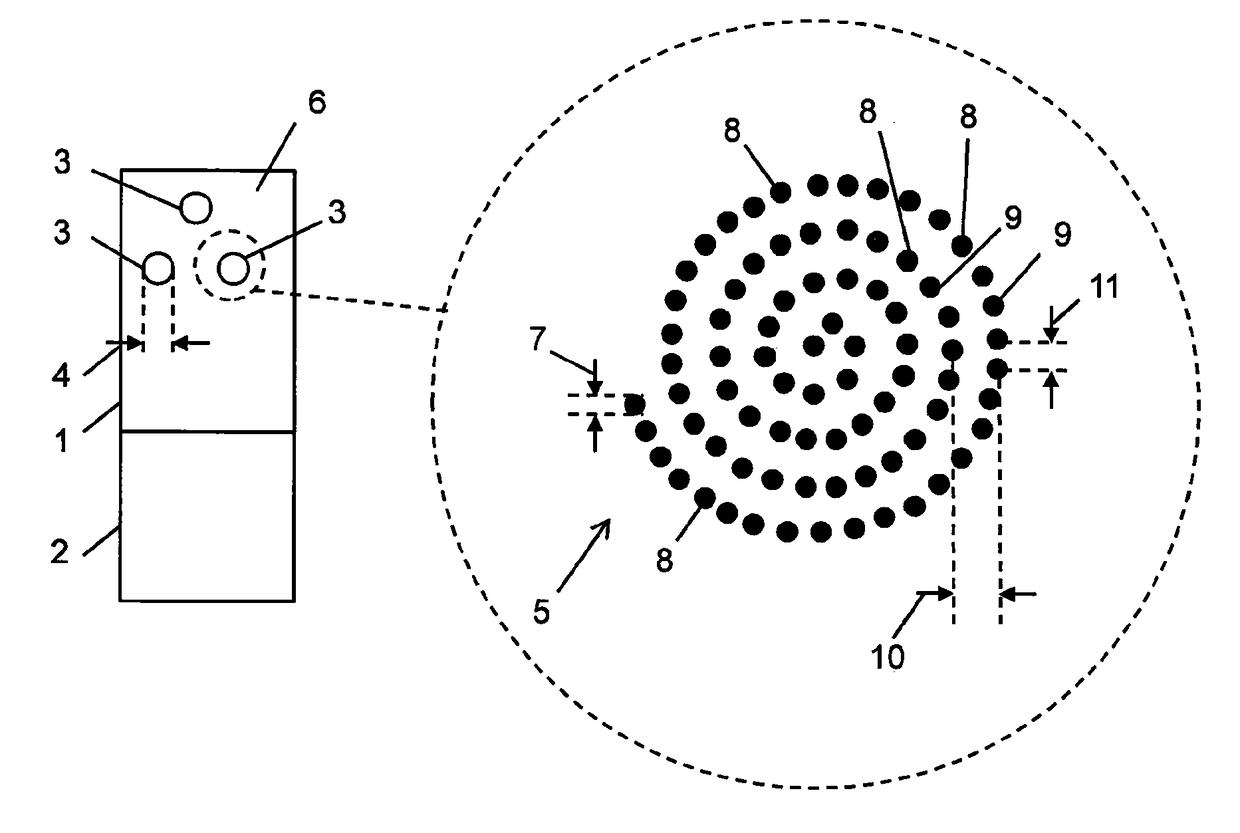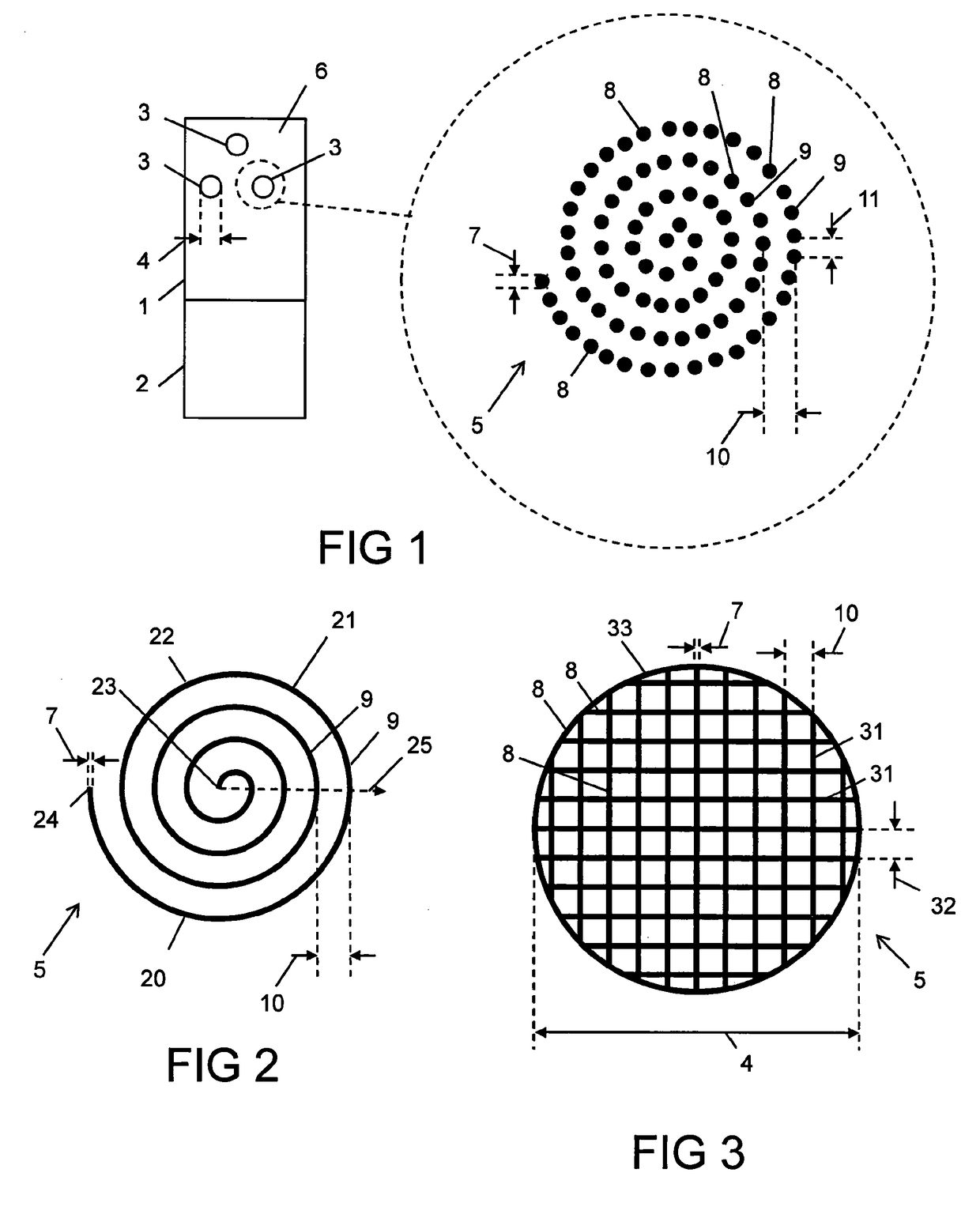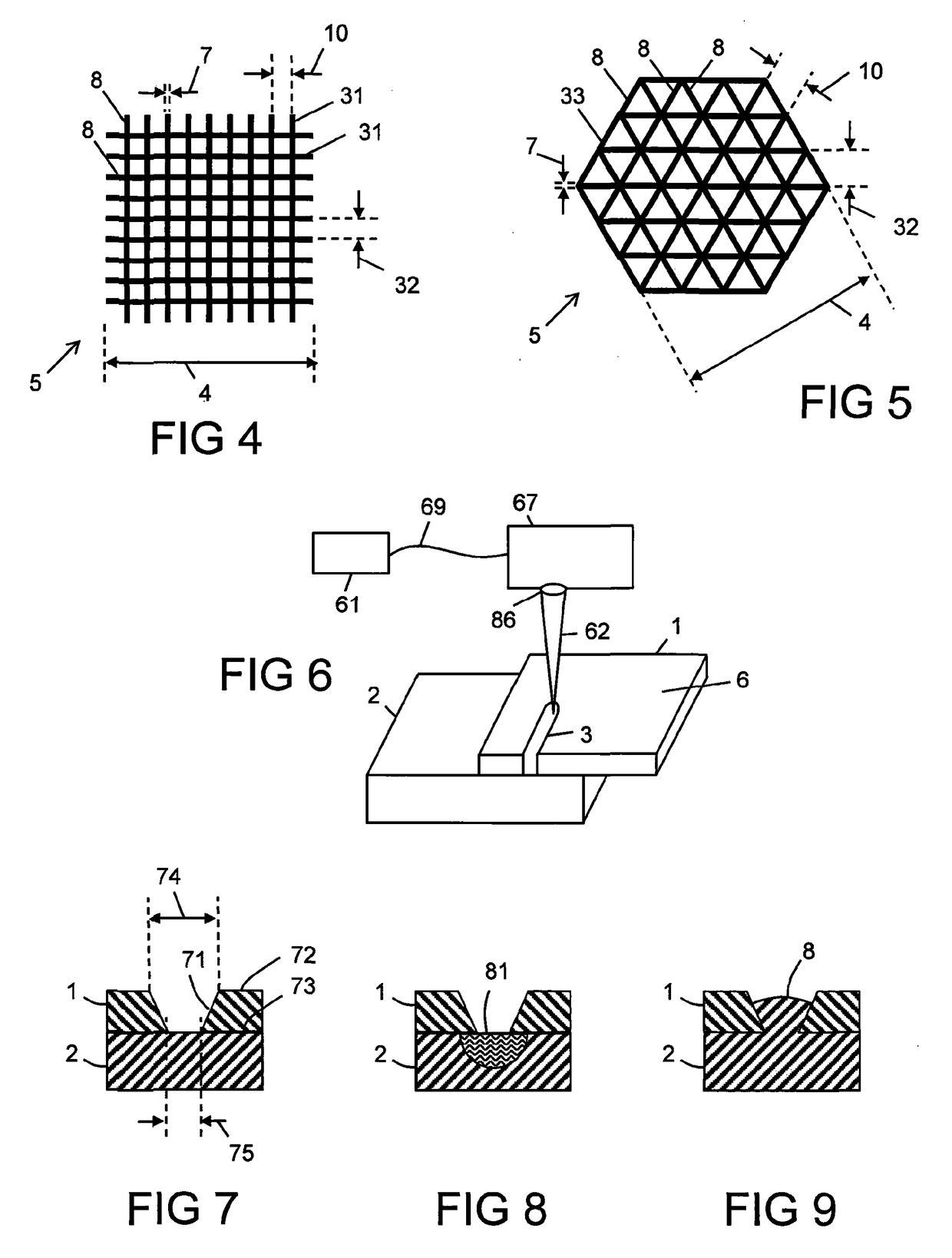A Weld
- Summary
- Abstract
- Description
- Claims
- Application Information
AI Technical Summary
Benefits of technology
Problems solved by technology
Method used
Image
Examples
example 1
[0202]FIG. 15 shows an artistic impression of a cross-section through a weld 310 formed between copper having a thickness 143 of 100 μm and aluminium having a thickness 144 of 400 μm. The weld 310 was in the shape of the spiral, shown with reference to FIG. 2, with a first separation 10 of 50 μm between the spiral arms 9, and a diameter 4 of 1 mm. The width 74 of the hole 71 was approximately 5 μm to 20 μm. The weld 310 was formed using multiple pulses 161 from the laser 61, which pulses 161 overlayed each other on the first material 1 by approximately 95% to 98% in area. The laser 61 has cut the first material 1, which is copper, and the second material 2 (aluminium) has flowed into the hole 71. At least some of the first material 1 has been injected into the second material 2, as evidenced by the zones 121 that comprise the first material 1. The zones 121 extend to approximately 300 μm to 400 μm into the second material 2. Voids 122 are also present. A heat affected zone 281, show...
example 2
[0206]FIG. 34 shows an artistic impression of a cross section of a weld 340 between a first material 1 copper and a second material 2 brass. The weld 340 was also formed in a similar spiral to the weld 310 shown with reference to FIG. 13. It is surprising that the brass has flowed into the copper material to form the weld 340 with very little intermetallic mixing. The weld 340 is substantially inhomogeneous. The copper and the brass have flowed, but have not mixed together to form new homogeneous material phases. The material phases of the copper and the brass are largely unmixed, with the copper and the brass being in their original material phases. This is particularly surprising given that brass is an alloy of copper and zinc. There are zones 121 of the first material 1 contained within the second material 2. There are also voids 122. The resulting joint formed by the weld 340 has excellent shear strength.
examples 3 to 10
[0207]The laser 61 used in Examples 3 to 10 was a nanosecond ytterbium-doped fibre laser, model SPI G4 70 W HS-H manufactured by SPI Lasers UK Ltd of Southampton, England. The laser is substantially similar to the laser used in Examples 1 and 2, though with a poorer beam quality 146, which was increased from approximately M2=1.6 to approximately M2=3. The spot size 174 was approximately 80 μm, which is approximately twice as large as obtained with the higher brightness laser used in Examples 1 and 2. Similar waveforms are provided with the laser as were described with reference to Table 1 and FIGS. 25 and 36.
[0208]Table 2 shows details of the welds 3 in Examples 3 to 10. The first metal listed in each example was the first material 1, and the second metal listed was the second material 2.
[0209]The welding pattern 5 was the rectangular hatching of FIG. 3. The first separation 10 and the third separation 32 were both equal to each other, and were varied between 0.2 mm and 2 mm. The op...
PUM
| Property | Measurement | Unit |
|---|---|---|
| Length | aaaaa | aaaaa |
| Length | aaaaa | aaaaa |
| Length | aaaaa | aaaaa |
Abstract
Description
Claims
Application Information
 Login to View More
Login to View More - R&D
- Intellectual Property
- Life Sciences
- Materials
- Tech Scout
- Unparalleled Data Quality
- Higher Quality Content
- 60% Fewer Hallucinations
Browse by: Latest US Patents, China's latest patents, Technical Efficacy Thesaurus, Application Domain, Technology Topic, Popular Technical Reports.
© 2025 PatSnap. All rights reserved.Legal|Privacy policy|Modern Slavery Act Transparency Statement|Sitemap|About US| Contact US: help@patsnap.com



